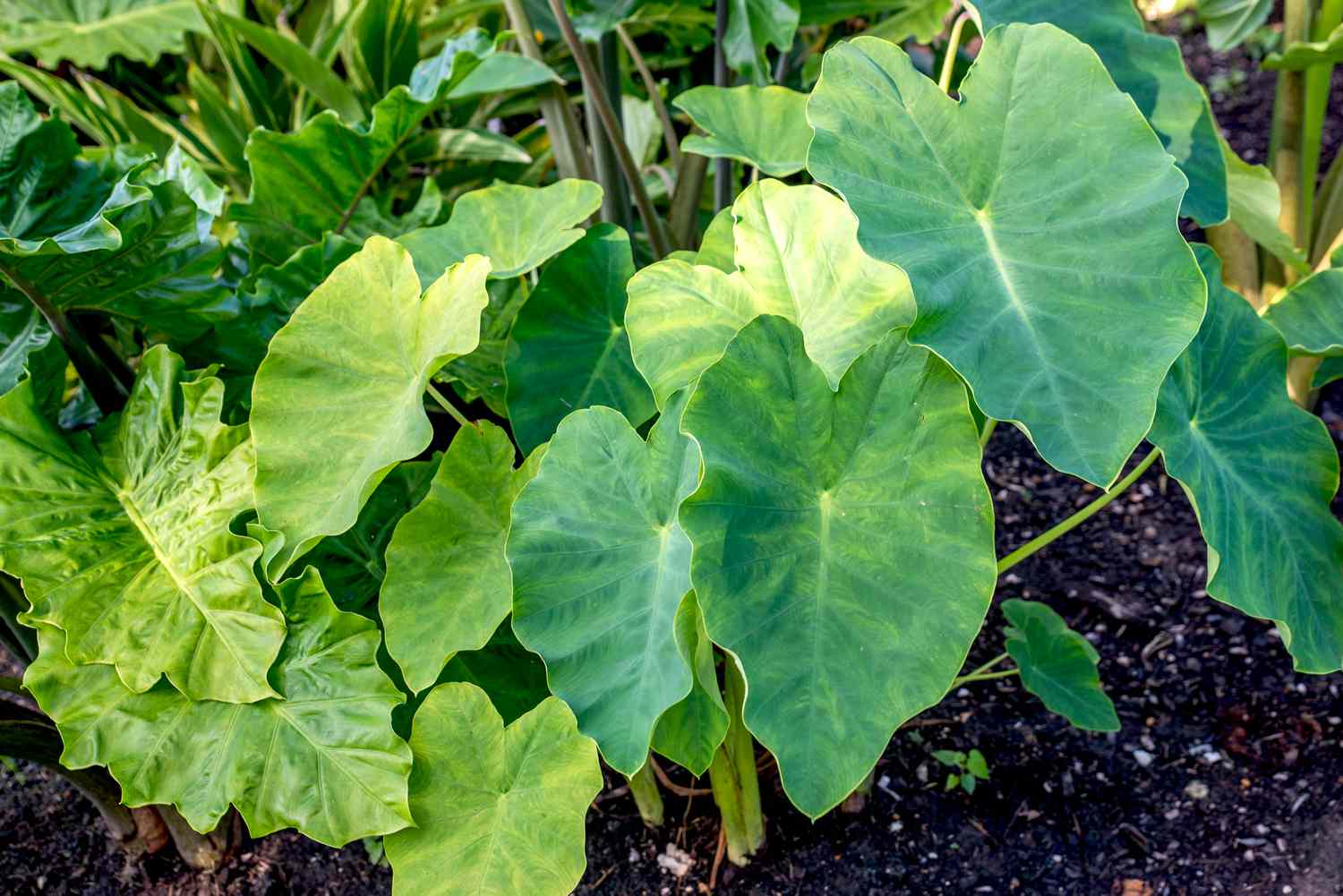
Elephant Ear, scientifically known as Alocasia or Colocasia, is a fascinating plant that is known for its large, tropical-looking leaves. It gets its name from its striking resemblance to the ears of an elephant. These plants are widely adored by gardeners and indoor plant enthusiasts for their unique beauty and impressive size.
In this article, we will dive into 14 mind-blowing facts about Elephant Ear that will leave you in awe of this stunning plant. From its origins and different species to its care requirements and amazing adaptations, we will explore the many intriguing aspects of Elephant Ear. Whether you are already an Elephant Ear enthusiast or just discovering these marvelous plants, get ready to be amazed!
Key Takeaways:
- Elephant Ear plants are native to Southeast Asia and can grow up to 3 feet long, making them a dramatic and eye-catching addition to any garden or indoor space.
- These plants are not only beautiful but also air-purifying, attracting wildlife, and symbolizing strength and resilience, making them a perfect choice for both indoor and outdoor environments.
Elephant Ear plants are native to Southeast Asia.
These stunning foliage plants originate from the tropical regions of Southeast Asia, including countries like Indonesia, Thailand, and Malaysia. Their large, heart-shaped leaves make them stand out in any garden or indoor space.
Elephant Ear leaves can grow up to 3 feet long.
The leaves of Elephant Ear plants are known for their impressive size. Some species can produce leaves that reach up to 3 feet in length, creating a dramatic and eye-catching display.
Elephant Ear plants belong to the Araceae family.
The Araceae family, also known as the Aroid family, includes a wide range of plants, with Elephant Ear being one of its most popular members. Other well-known plants in this family include the Peace Lily and Philodendron.
Elephant Ear plants can thrive in both sun and shade.
One of the great advantages of Elephant Ear plants is their adaptability to different light conditions. While they prefer partial shade, they can also tolerate full sun or deep shade, making them versatile options for various gardening environments.
Elephant Ear plants can grow in water.
If you’re looking for a unique way to showcase your Elephant Ear plant, you can even grow it hydroponically. These plants have the ability to thrive when their roots are submerged in water, adding a captivating touch to your indoor space.
Elephant Ear plants are known for their air-purifying qualities.
Aside from their aesthetic appeal, Elephant Ear plants are also beneficial for improving indoor air quality. They have the ability to filter and cleanse the air by removing harmful toxins, making them excellent choices for homes and offices.
Elephant Ear plants are often used in landscaping projects.
Due to their striking appearance and versatility, Elephant Ear plants are frequently incorporated into landscaping projects. Their large leaves and tropical vibes can add elegance and a touch of exoticism to any outdoor space.
Elephant Ear plants can be grown indoors as well.
If you don’t have access to a garden or live in a colder climate, fear not! Elephant Ear plants can thrive as indoor houseplants. With proper care and the right conditions, they can flourish and bring a touch of nature to your interior decor.
Elephant Ear plants have a dormant period.
During the winter months, Elephant Ear plants undergo a dormant period where their growth slows down. It is during this time that they require less water and fertilizer. However, with the arrival of spring, they will start to regrow and flourish once again.
Elephant Ear leaves can have different color variations.
While the typical color of Elephant Ear leaves is a vibrant green, some species can display variations such as dark purple or variegated patterns. This adds diversity and visual interest to these already fascinating plants.
Elephant Ear plants can attract wildlife to your garden.
With their large leaves and enticing flowers, Elephant Ear plants can attract various wildlife, including butterflies, bees, and even hummingbirds. Creating a welcoming habitat for these creatures adds an extra level of liveliness to your outdoor space.
Elephant Ear plants are tropical and require ample humidity.
As natives of tropical regions, Elephant Ear plants thrive in environments with high humidity levels. To replicate their preferred conditions, misting the leaves or placing a humidifier nearby can help keep them happy and healthy.
Elephant Ear plants can be propagated through division.
If you wish to expand your collection of Elephant Ear plants, you can easily propagate them through division. Simply separate the offshoots that grow around the main plant and replant them in separate containers or garden areas.
Elephant Ear plants symbolize strength and resilience.
In many cultures, Elephant Ear plants represent strength and resilience due to their ability to withstand various environments and their striking appearance. Having these plants in your space can serve as a reminder of personal strength and endurance.
Conclusion
In conclusion, Elephant Ear is a fascinating and versatile plant that offers numerous benefits and an intriguing history. From its large and striking leaves to its impressive size, this plant is sure to make a statement in any garden or indoor space. Not only is it aesthetically pleasing, but it also has medicinal properties that have been used for centuries.Whether you’re a seasoned gardener or just starting out, Elephant Ear is a great choice. Its low maintenance nature and ability to thrive in various conditions make it a resilient and enjoyable plant to grow. So why not add a touch of the exotic to your garden or home with this incredible plant? Experience the beauty and wonder of Elephant Ear for yourself!
FAQs
Q: What is an Elephant Ear plant?
A: An Elephant Ear plant, scientifically known as Colocasia or Alocasia, is a large tropical plant characterized by its oversized, heart-shaped leaves that resemble elephant ears.
Q: How tall can an Elephant Ear plant grow?
A: Depending on the variety, an Elephant Ear plant can grow anywhere from 2 to 9 feet in height, with some reaching even taller heights under optimal growing conditions.
Q: Can Elephant Ear plants be grown indoors?
A: Yes, Elephant Ear plants can be grown indoors as long as they are provided with adequate light, humidity, and space. They can make a stunning addition to any indoor space or greenhouse.
Q: How often should I water my Elephant Ear plant?
A: Elephant Ear plants prefer consistently moist soil. Watering frequency will depend on various factors such as the size of the plant, the temperature, and the humidity levels. It is important to keep the soil evenly moist, but not soggy, to prevent root rot.
Q: Do Elephant Ear plants require any special care?
A: While Elephant Ear plants are relatively low maintenance, they do require some care. Regular fertilizing, occasional pruning, and protection from extreme temperatures or harsh winds are recommended to ensure their optimal growth and health.
Q: Are Elephant Ear plants toxic to pets?
A: Yes, Elephant Ear plants are toxic to pets. It is important to keep them out of reach of dogs, cats, and other animals as ingestion of any part of the plant can lead to various health issues.
Q: Can I propagate my Elephant Ear plant?
A: Yes, Elephant Ear plants can be propagated through division or by rooting plantlets that grow from the parent plant. With the right techniques and care, you can successfully multiply your Elephant Ear collection.
Was this page helpful?
Our commitment to delivering trustworthy and engaging content is at the heart of what we do. Each fact on our site is contributed by real users like you, bringing a wealth of diverse insights and information. To ensure the highest standards of accuracy and reliability, our dedicated editors meticulously review each submission. This process guarantees that the facts we share are not only fascinating but also credible. Trust in our commitment to quality and authenticity as you explore and learn with us.


